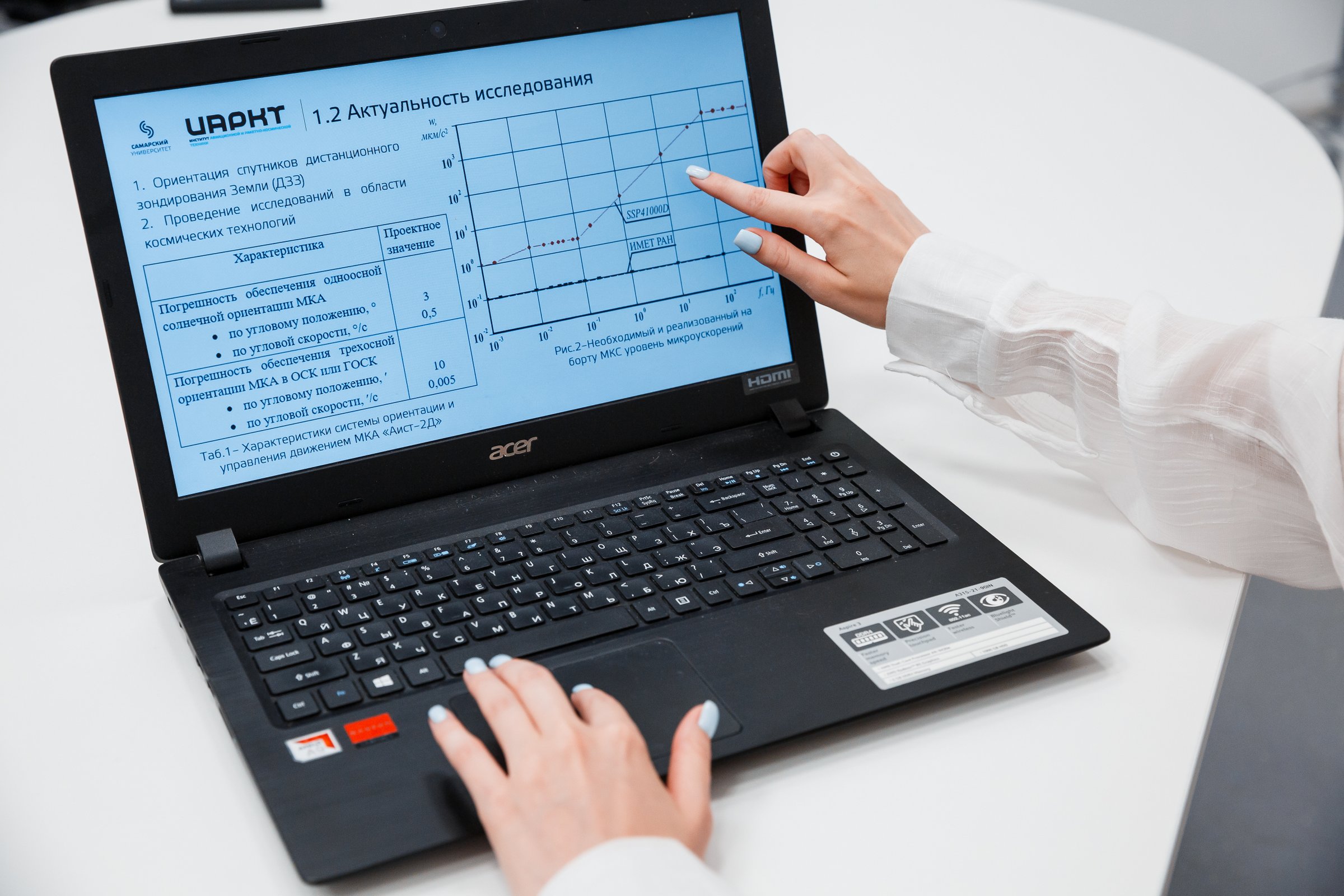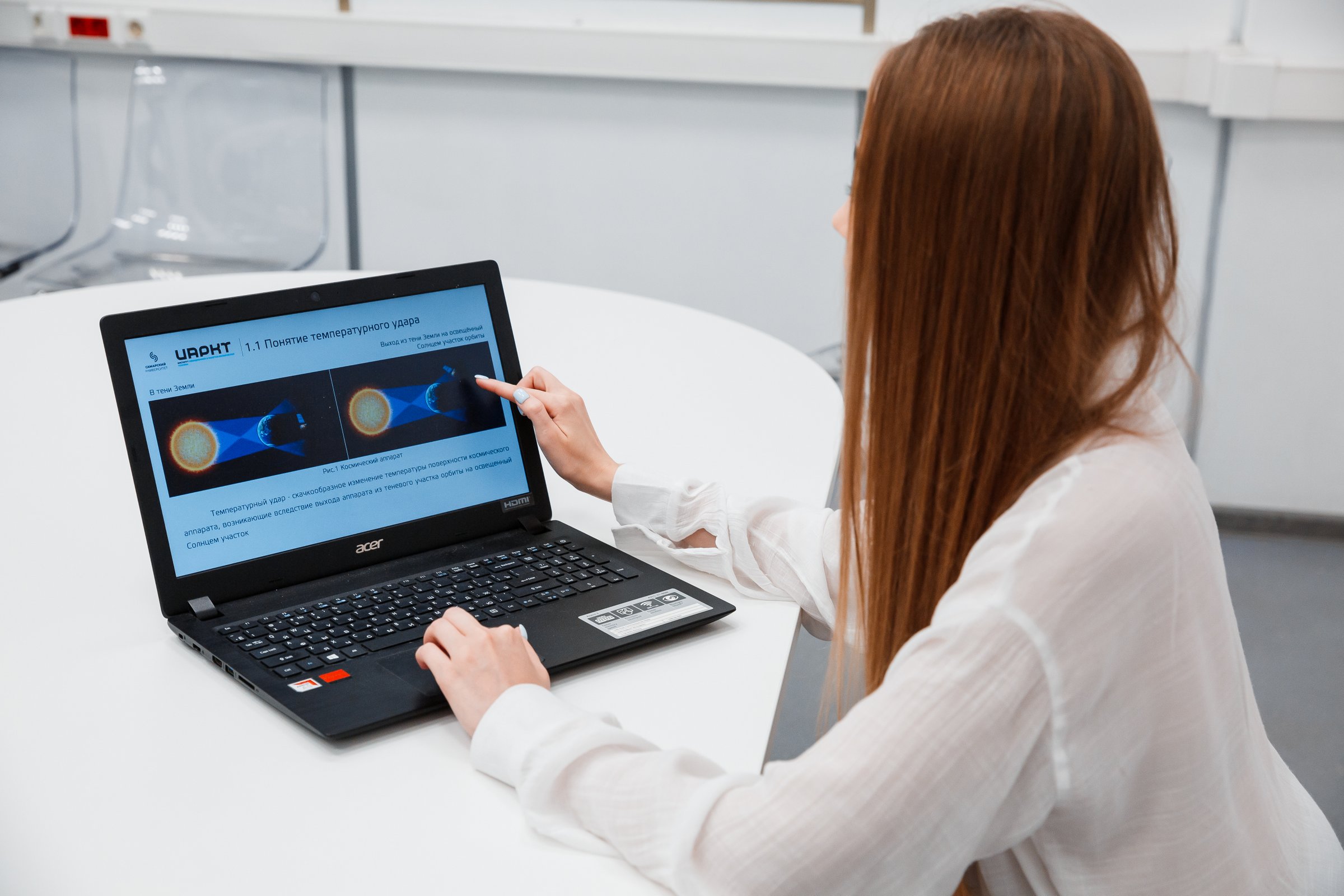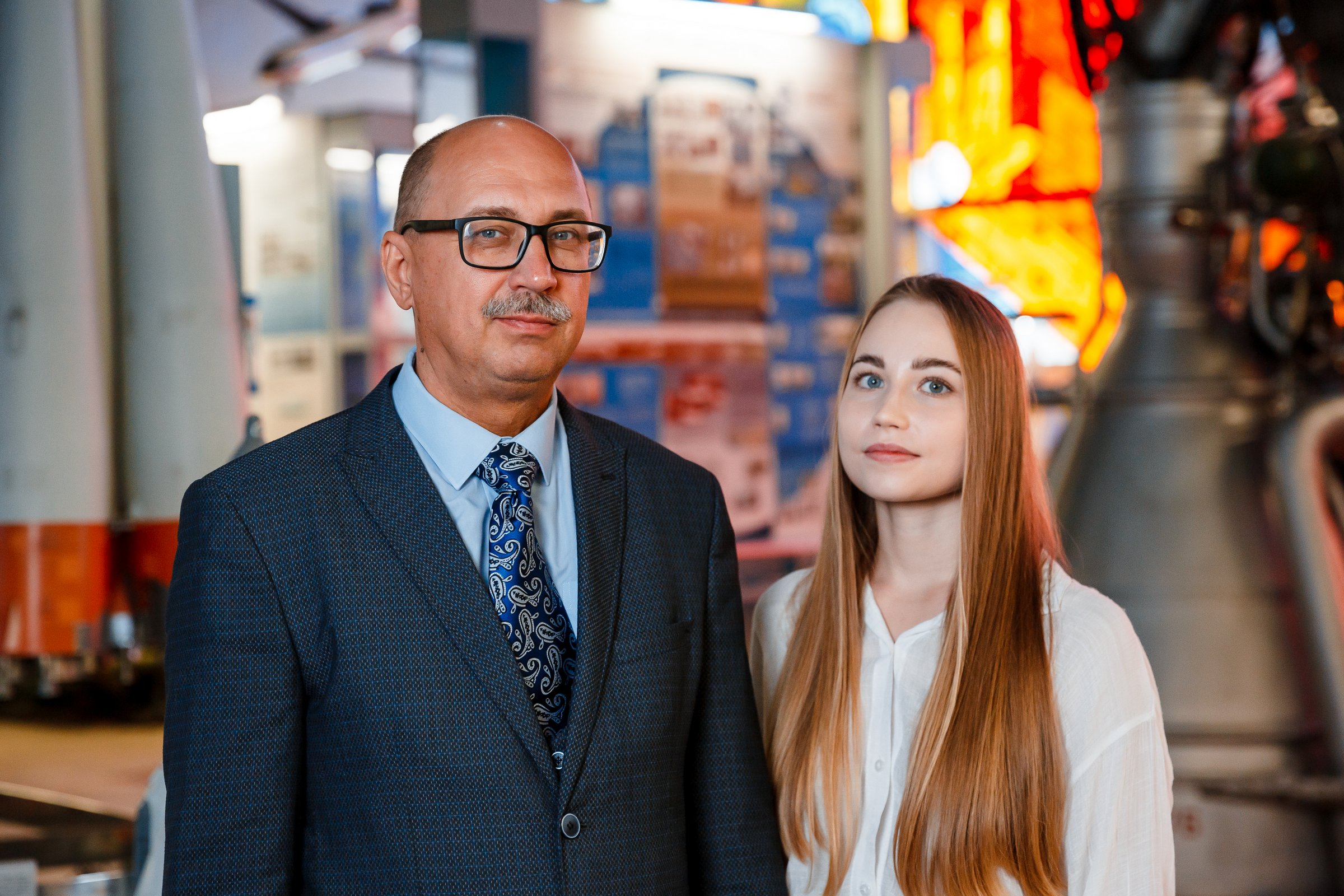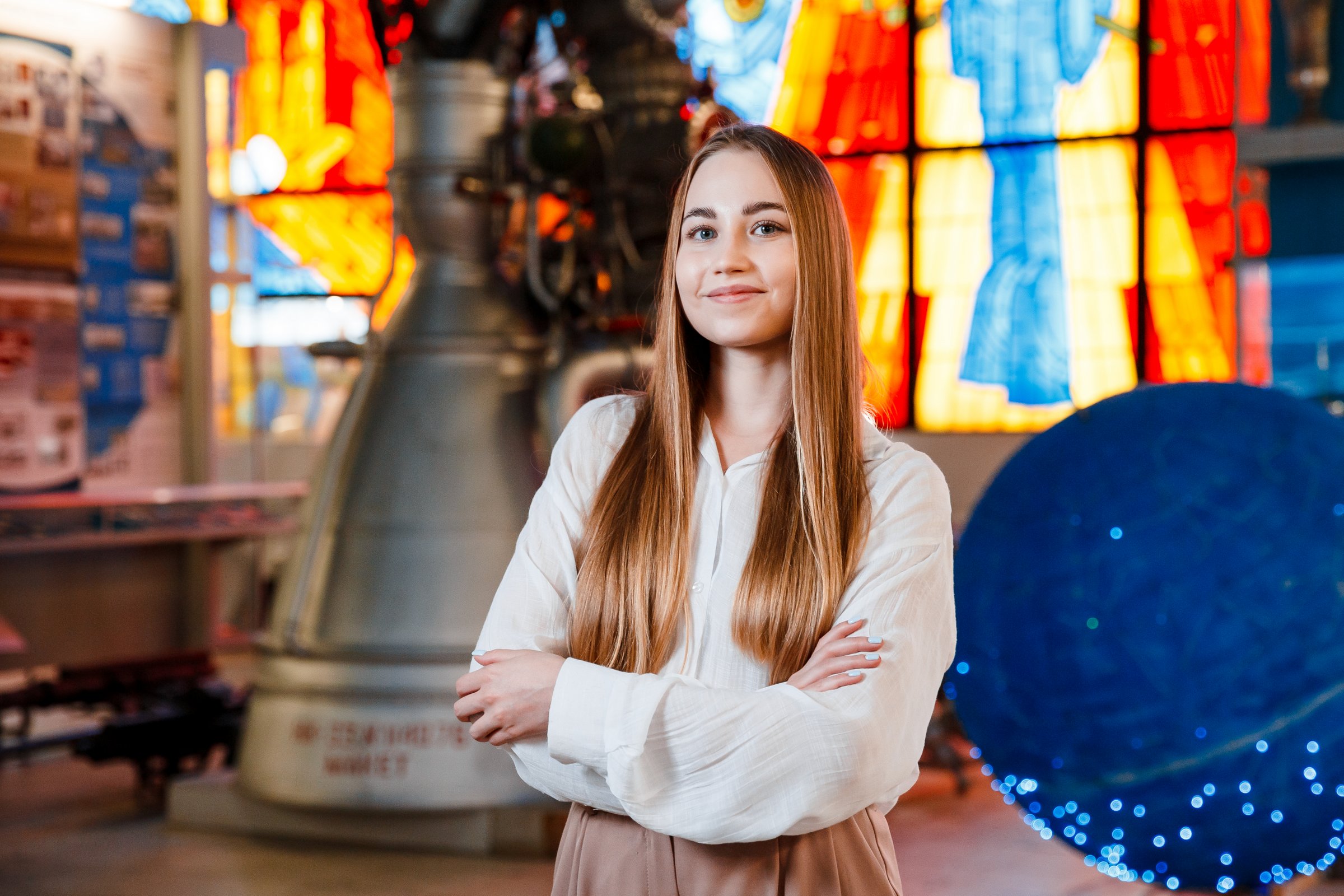This research received financial support from the Russian Science Foundation. Following the results of the study, one of the authors of the scientific work, a student of the Institute of Aviation and Space-Rocket Engineering of Samara University Aleksandra Nikolaeva was awarded a medal and a prize of the Russian Academy of Sciences.
“After the end of the period of active existence, small spacecrafts become uncontrolled space debris that poses a danger to other objects in orbit, due to the threat of collision with it. Many methods of space debris removal have been developed, and some of them involve towing a satellite from orbit using various cable systems. But these methods, as a rule, do not take into account one phenomenon: when the satellite, moving in orbit, comes out of the Earth’s shadow and falls under the Sun’s rays, it suffers from temperature impact, due to which it can break off from the tow truck’s cable system. Then it will have to be caught and hooked again, which requires additional time and energy”, told us Aleksandra Nikolaeva.
When a satellite is in the Earth’s shadow, its body temperature can drop very low – for example, up to 150 °C below zero. The Sun’s rays can heat the satellite up to 150 °C above zero. This abrupt temperature gradient, so-called temperature shock, leads to deformation, deflection of the elastic elements of the spacecraft structure. Due to this deformation, the force of inertia arises, the satellite receives micro-acceleration, as if it were pushed, so it begins to rotate and breaks off the “hook” of the space-debris collector. The more elastic structures in the satellite and the larger they are in size and in mass, the stronger impact of the temperature shock, and the stronger the push and rotation of the spacecraft.
“Solar panels are the most vulnerable to temperature shock, temperature impact on them can lead to unacceptably high micro-accelerations. For example, during an experiment at the ISS with promising ROSA-type solar panels, the temperature impact was so intense that it made impossible for the panels to be rolled-up at the end of the experiment. Thus, in a number of situations temperature shock in space is a very significant disturbing factor, which determines relevance of our research”, said Aleksandra Nikolaeva.
For carrying out numerical modeling, the researchers used main specifications of a typical Starlink satellite weighing 260 kg. It has only one solar panel with a total weight of 75 kg and dimensions of 9.6 x 3.2 x 0.006 m, however, as the simulation showed, the maximum value of the disturbing moment due to a temperature shock can reach about 50 N·m for such a satellite – it's about as if the edge of a solar panel with a length of 1 m they would suddenly put a load weighing 5 kg: the “tricks” of the satellite in orbit after that are provided.
“In this scientific work, the influence of temperature deformations of the solar panel of the Starlink satellite on the parameters of the rotational motion of the spacecraft has been thoroughly analyzed. The researchers calculated the behavior model of a satellite undergoing temperature shock, and obtained dependences of the perturbing moment, as well as estimated angular acceleration resulting from this perturbation. This perturbation simply needs to be taken into account when transporting space debris by cable systems, and results of this research will certainly be useful in designing effective space debris collecting systems”, emphasized Aleksandra Nikolaeva’s scientific supervisor, Professor of the Department of Theoretical Mechanics and the Department of Space Engineering Andrey Sedelnikov.
For reference:
The Russian Academy of Sciences annually awards a medal with a prize for the best scientific works, for the purpose of identifying and supporting talented young researchers, promoting young scientists’ professional growth and creative activity in Russia, and encouraging students of higher education institutions to conduct scientific researches. The amount of the award to the winners is 25 thousand rubles for students and 50 thousand rubles for young scientists.
Text: Aleksey Sokolov
Photo: Olesya Orina
 RU
RU  EN
EN  CN
CN  ES
ES 




